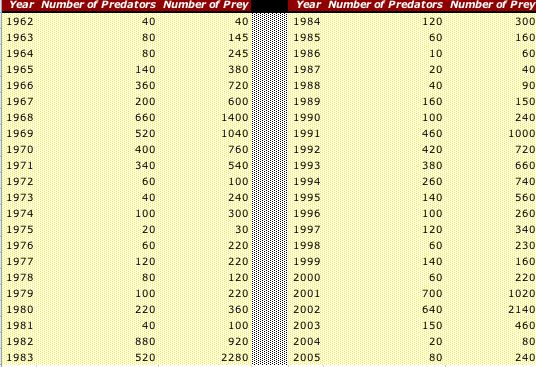Research Question:
How do populations of predators and prey change over time?

Standards addressed:
6th grade science:
5e. Students know the number and types of organisms an ecosystem can support depends on the resources available and on abiotic factors, such as quantities of light and water, a range of temperatures, and soil composition.
Biology
6c. Students know how fluctuations in population size in an ecosystem are determined by the relative rates of birth, immigration, emigration, and death.
6th Grade Math
2.0 Students use data samples of a population and describe the characteristics
and limitations of the samples:
2.1 Compare different samples of a population with the data from the
entire population and identify a situation in which it makes sense to
use a sample.
2.2 Identify different ways of selecting a sample (e.g., convenience sampling,
responses to a survey, random sampling) and which method makes a sample more
representative for a population.
2.3 Analyze data displays and explain why the way in which the question was asked
might have influenced the results obtained and why the way in which the results
were displayed might have influenced the conclusions reached.
2.4 Identify data that represent sampling errors and explain why the sample (and
the display) might be biased.
2.5 Identify claims based on statistical data and, in simple cases, evaluate
the validity of the claims.

